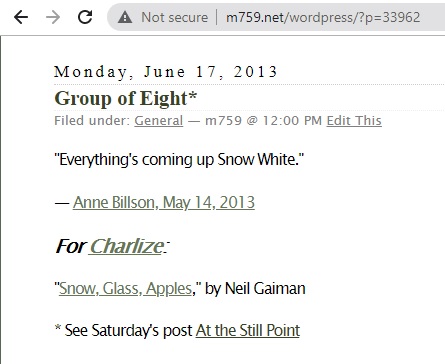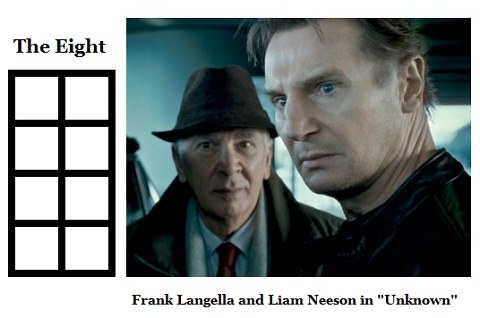Light at Bologna
“Others say it is a stone that posseses mysterious powers…. often depicted as a dazzling light. It’s a symbol representing power, a source of immense energy. It nourishes, heals, wounds, blinds, strikes down…. Some have thought of it as the philosopher’s stone of the alchemists….”
— Foucault’s Pendulum
by Umberto Eco,
Professor of Semiotics at
Europe’s oldest university,
the University of Bologna.
by Arturo Perez-Reverte
(Paperback, pages 346-347):
One by one, he tore the engravings from the book, until he had all nine. He looked at them closely. “It’s a pity you can’t follow me where I’m going. As the fourth engraving states, fate is not the same for all.”
“Where do you believe you’re going?”
Borja dropped the mutilated book on the floor with the others. He was looking at the nine engravings and at the circle, checking strange correspondences between them.
“To meet someone” was his enigmatic answer. “To search for the stone that the Great Architect rejected, the philosopher’s stone, the basis of the philosophical work. The stone of power. The devil likes metamorphoses, Corso. From Faust’s black dog to the false angel of light who tried to break down Saint Anthony’s resistance. But most of all, stupidity bores him, and he hates monotony….” |
by Guy Davenport
Johns Hopkins paperback, 1993, page 127 —
Lo Splendore della Luce a Bologna, VI:
“In 1603, at Monte Paderno, outside Bologna, an alchemist (by day a cobbler) named Vicenzo Cascariolo discovered the Philosopher’s Stone, catalyst in the transformation of base metals into gold, focus of the imagination, talisman for abstruse thought. Silver in some lights, white in others, it glowed blue in darkness, awesome to behold.”
 Bologna, 16th Century
Bologna, 16th Century “For the University of Bologna hosting an International Conference on Bioluminescence and Chemiluminescence has a very special significance. Indeed, it is in our fair City that modern scientific research on these phenomena has its earliest roots….
‘After submitting the stone
to much preparation, it was not
the Pluto of Aristophanes
that resulted; instead, it was
the Luciferous Stone’ ”
|
From one of the best books
of the 20th century:
by Richard Brautigan
“The Chemicals that resided in the jar were a combination of hundreds of things from all over the world. Some of The Chemicals were ancient and very difficult to obtain. There were a few drops of something from an Egyptian pyramid dating from the year 3000 B.C.
There were distillates from the jungles of South America and drops of things from plants that grew near the snowline in the Himalayas.
Ancient China, Rome and Greece had contributed things, too, that had found their way into the jar. Witchcraft and modern science, the latest of discoveries, had also contributed to the contents of the jar. There was even something that was reputed to have come all the way from Atlantis….
… they did not know that the monster was an illusion created by a mutated light in The Chemicals. a light that had the power to work its will upon mind and matter and change the very nature of reality to fit its mischievous mind.” |










